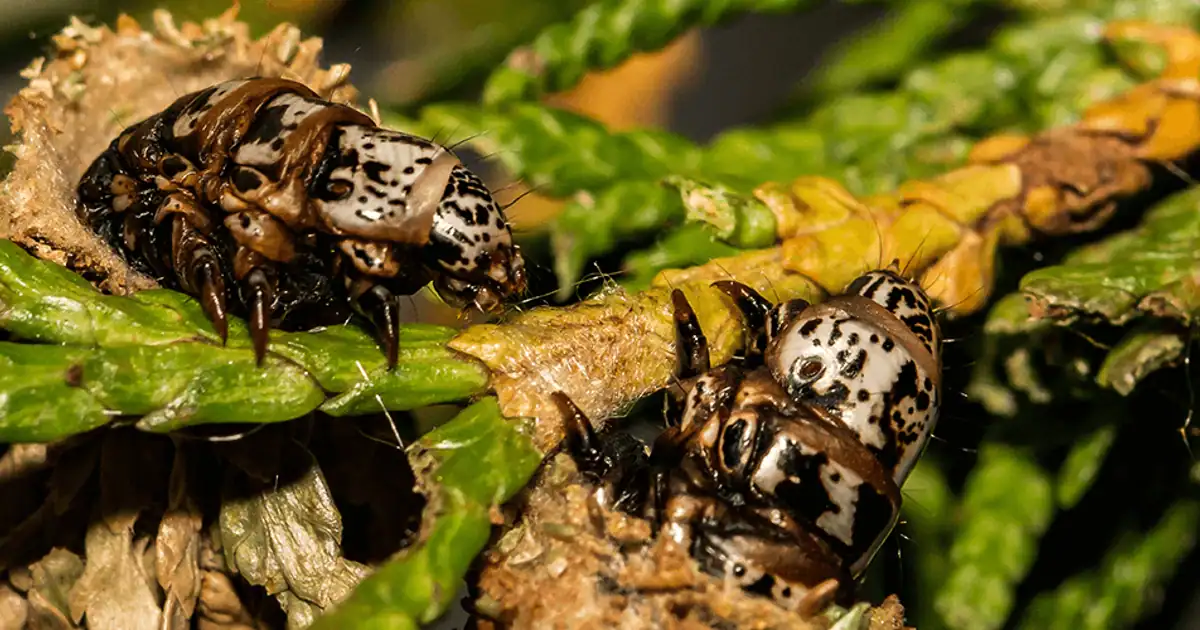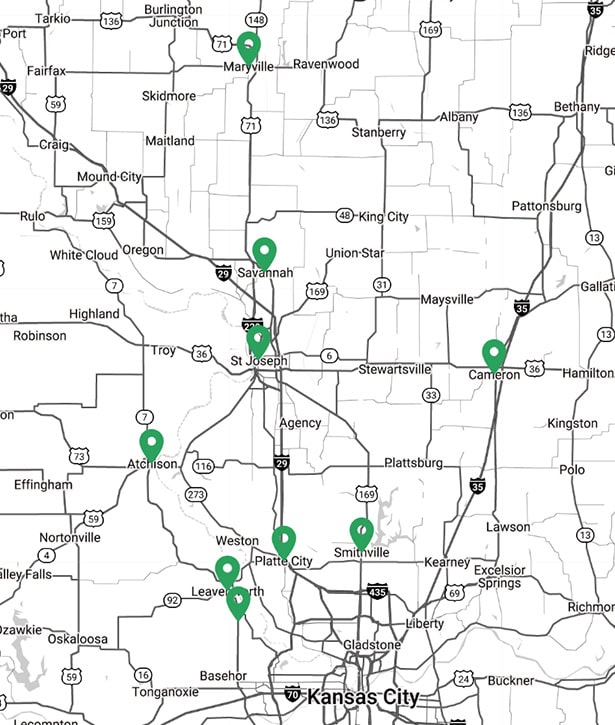
This insect is usually first detected by observing the bags produced by the larval (caterpillar) stages. Bags vary in size (up to 2 inches long and 1/2 inch wide) by growth stage of the larva and between species, and appearance varies with the bits and pieces of host plant leaves, twigs and bark fragments woven in to the silken bag in a shingle-like fashion. Caterpillars of a few other species construct bags or sacks, however, only bagworms incorporate plant debris into the sacs.
Although bagworm species vary slightly in habits and life cycle, on evergreens the bagworm spends winter months in the egg stage within the sealed bag produced by females the previous fall. In the spring (late May, early June), tiny 1/25 inch long caterpillars hatch, lower themselves on silken strands to new foliage and construct a tiny conical bag which they carry upright as they move. As the caterpillar grows through four or more molts (instars), it enlarges its bag. Full grown caterpillars within bags are up to 1 inch long before pupating in August or September. Seven to 10 days later, the pupae of male moths wriggle out of the bottom of the bag before the male emerges, leaving the empty pupal skin behind. Adult males have short ½ inch-long clear wings, hairy black bodies and feathery antennae emerge. They fly and seek out a female to mate. Females do not develop into moths, but remain inside bags and resemble maggots, with no functional eyes, legs, mouthparts or antennae. After mating, females produce a large clutch (500 to 1,000) of eggs inside their bodies and die. Other bagworm species spend winter months as partially-developed caterpillars that complete feeding and pupate in the spring. Adults emerge in the spring, although some emerge as late as October.
Habitat and Food Source(s): Caterpillars have chewing mouthparts. A wide range of broadleaf and evergreen trees and shrubs serve as hosts for bagworm species, including arborvitae and other ornamental conifers, box elder, cedar, cypress, elm, fruit and nut trees, juniper, live oak, locust, maple, persimmon, pines, salt cedar, sumac, sycamore, wild cherry, willow and many other ornamental plants. Infested plants develop more bagworms each year because female stages do not fly and remain on the plant. They may become abundant enough in some years to completely defoliate their host plant. During leaf-feeding, the caterpillars emerge from the top of the bag and hang onto the host plant with their legs and sometimes with a silken thread. The bottom of the bag remains open to allow fecal material (frass) to pass out of the bag. During molts and pupation, caterpillars seal the bags. Dispersal of bagworms to new host plants occurs when young caterpillars hanging from silken threads are spread by wind or perhaps by birds. Bags can be removed from host plants by hand or by shaking the branches vigorously. The use of an extension pole and brush may also be exercised.
Locally owned, and family operated, committed to the St. Joseph Missouri community for over 50 years
Our certified and extensively train technicians ensure effective, safe pest management
Over five decades of proven Pest Control experience and unparalleled customer satisfaction.
Custom pest management plans tailored to your specific needs for effective, targeted results.
Guaranteed pest control solutions that ensure lasting results in peace of mind
If you don’t see your city on the map, that doesn’t mean we can’t service your area. Please contact us if you have any questions.
Call Us Today
Learn more about our Community Center

14375 US-71, Savannah, MO 64485
Office Hours
* Appointments are available outside of standard office hours to better accommodate your schedule.